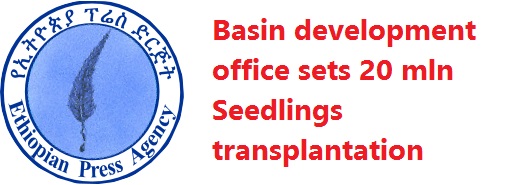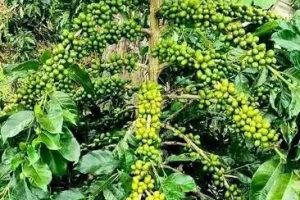
As per the endeavor towards realizing 40 billion seedlings transplantation at a national level this year, the Abay Basin Development Office sets to transplant plus to 20 million seedlings this Ethiopian rainy season.
Abay Basin Development Office General Manager Wondossen Mengistu told The Ethiopian Herald that as part of rejuvenating the green Ethiopia via reforestation, the office is all-out to handle its part. The office will also undertake major best experience and drawbacks identifications on basin development and environment protection activities, which will be realized in partnership with the public, he added.
As to him, the seedlings to be transplanted this year are indigenous, soil preserving, economically prioritized cash crops and mostly income generating like; coffee, papaya, apple, mango, buckthorn (Geisho) and peppercorn.
Administering water resource potential properly is fundamental towards expediting national socio-economic development. “As the area [Abay Basin] is large volume water feeding source of river Abay (Blue Nile) we are conducting massive seedling plantation, environment protection and other measures to parry sedimentation at the Grand Ethiopian Renaissance Dam (GERD), he adds.
The office is seeing to the necessary measures to ensure the Dam’s safety from unwanted sedimentation and ensuring the sustainable flow of water, he noted.“We have already identified and prioritized hotspot areas along with rehabilitating the basin’s environmental protection activities. So far, the office undertakes more than 407,000 hectares of land environmental protection and rehabilitation task through reforestation and shading as a park throughout the year.”
On the other hand, the implementation of standardized technology assisted water resource development is important while undertaking environmental and water resources protection, he stressed.
More than 210 satellite and solar based telemetric scientific hydrologic information measurement devices are adjusted on the Abay Basin’s (Blue Nile) major rivers and streams drainage system to identify its sediment volume, water catchment and cultivate the country’s water resource, according to him.
As to him, the device also enables recognizing water resource quality and quantity inconsistency due to urbanization and land utilization and administration changes. The devices record and report any happenings on and around the rivers which enable monitoring and following up the rivers’ flow, water volume, quality, sedimentation and other characters.
Full-furnished laboratory facilities are also available inside the basin development office that undertakes a thorough analysis based on the collected samples from the devices [hydrologic information measurement], he said.
He also said that it is the first of its kind to the country in which experts simply monitor the activities of every river in office. As the devices are adjusted on the trans-boundary river Nile, it facilitates scientific, concrete and reliable information provision to expertise at any time for the purpose of water negotiations, policy making and utilizing the river water resource properly, he underlined.
“Reliable information source is fundamental to develop our water resource potential to a maximum level.” Accordingly, Abay Basin Development Office undertakes the following major activities: water resource administration, basin development and protection, establishing reliable water resource information system, basin development and irrigation projects management, administer master plan and structural and legal issues regarding the basin’s holistic water resource.
The Ethiopian Herald, June 16/2019
BY TEWODROS KASSA





